Honda BR-V Review, First Drive
The Honda BR-V, in the midst of its SUV-rivals, brings in the practicality and space of a 7-seater to an SUV dominated segment. We got our hands on Honda's new MPV. Here's what we think.
The crossover segment is rewriting the rules of the game. So, Honda finally throws its hat in the ring with the brand new BR-V.
There’s all this talk about compact crossovers as though they’ve been around forever. Often, we forget that two of the largest manufacturers have only recently entered this hot-selling market segment. I’m referring, of course, to the Creta from Hyundai and the Vitara Brezza from Maruti Suzuki. Well, Honda now wants a slice of the action as well and intends to get it courtesy of its all-new BR-V. And it’s counting on being just that little bit different from the rest!
Honda’s making no bones about the BR-V not being an SUV – instead they’re going down the straightforward path of calling it a crossover themselves. And that’s a good thing, especially considering that it clearly matches its rivals in terms of capability. In fact, on paper, the BR-V seems to make more sense since it’s a seven-seat vehicle – which is two more than you get in its direct rivals.
Under the skin
Scratch below the surface,and you find that the BR-V is spawned off the same platform as the Brio hatchback. This, in turn, means that the BR-V shares its underpinnings with the Amaze compact sedan and Mobilio MPV as well.
What Honda has done here is stretch the platform to make the BR-V longer than both the Creta and the Renault Duster. The BR-V is also taller than the Creta, and has greater ground clearance too – 210mm to be precise.
Skin deep
To ensure that the BR-V can match the imposing stance of its rivals, it features a bold front end with a tall bumper, chunky chrome grille, and a mild power dome on the bonnet. Due to an aggressive front end, the BR-V grabs your attention on the road as an SUV / crossover should.
However, walk over to its side and an immediate mental connect is made to the Mobilio as the BR-V has the exact same design lines as the compact MPV – with two sharp creases, one below the front window and the other in the lower portion of the rear door. Honda has tried to add a dash of rugged appeal though, with plastic body cladding around the lower section of the car. The BR-V also gets a fairly prominent pair of roof rails.
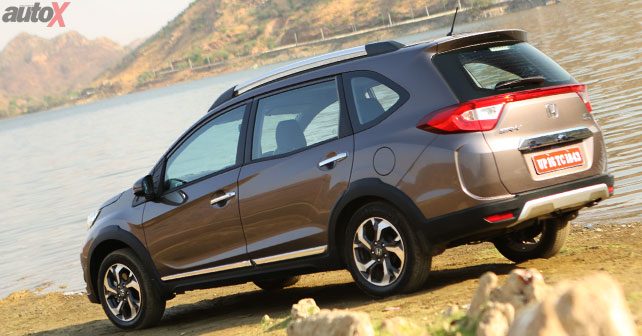
Around the back, the tail lamps at either end are connected by a red reflector strip running across the tailgate. Otherwise it’s pretty plain Jane at this end – and it even looks a bit narrow when viewed directly from the back. In fact, from this angle, the BR-V looks more like a wagon rather than a utility vehicle.

The BR-V’s cabin is virtually lifted from its smaller sibling, the Amaze – especially the dashboard, which is identical to the compact sedan. The only differences are in the form of some finishes, as well as the steering wheel. The leather on the wheel feels great to hold and is better than even the City. The same goes for the door pads as well – which are identical to those on the Amaze, but come with leather padding for the arm rests.
And it’s this association with the Amaze that’s dragging the BR-V down a little bit. The level of equipment that the Amaze comes with is fine in its segment, but the BR-V – which is going up against bigger rivals – falls short of the mark. While you do get a Bluetooth equipped stereo with steering mounted controls, a comprehensive driver information display and climate control, there’s little else on offer. All the basics are there, in terms of power windows, tilt adjustable steering wheel, height adjustable driver’s seat, rear defogger and wash wipe. But other essentials, such as rear parking sensors or a rear view camera, are absent.
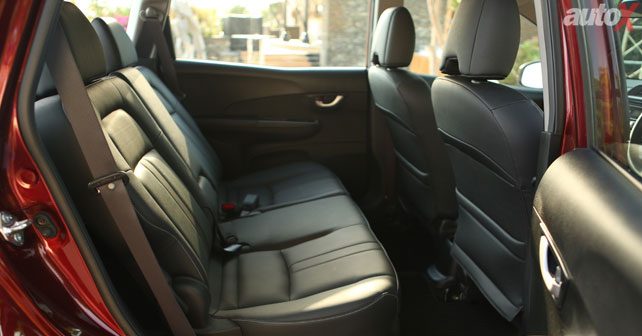
Where the BR-V makes up forlost ground is when it comes to its seats. Unlike its smaller siblings, the car comes with all-new seats that are really comfortable and supportive. The cushioning is near perfect, and should be very comfortable on long drives. The front seats offer excellent lower back and under thigh support, although upper back support could have been better. The same goes for the second row of seats, which offer plenty of legroom as they slide back and forth. Folding them away is a fairly easy affair, with the flick of a lever. The third row, as expected, is short of under thigh support – but offers good back support.And the adjustable headrests are a nice touch. Sliding the second row forward provides adequate legroom even for adults in the third row.
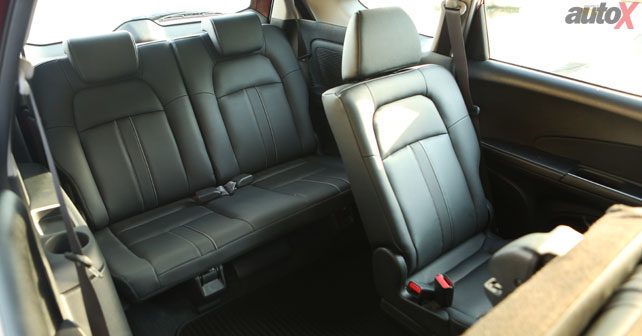
With all three rows of seats up you get 223 litres of boot space, which is not too bad. Fold the third row, though, and you get a very generous 671 litres of space.
Also read- Honda BR-V vs Hyundai Creta: Comparison

Honda is offering the BR-V with three powertrain options – a 1.5 litre petrol engine with a six-speed manual gearbox (a first for Honda in India), a CVT transmission mated to the same engine, and the company’s 1.5 litre i-DTEC diesel mill that also does duty in the Amaze, Mobilio and City.
The oil burner develops 100bhp at 3,600rpm and 200Nm of peak torque at 1,750rpm, as it does in the rest of the Honda range. And, while performance is adequate for its siblings, the BR-V’s heavier kerb weight of 1,306kg makes it feel a little sluggish at lower revs – to the point where you have to constantly work the notchy gearbox and keep the motor spinning above 1,500rpm to have enough power on tap. Still, Honda has ensured that the clutch is light – which means that the car is easy to live with in stop-start traffic. Combine this with the light steering,and it makes the BR-V an ideal city crossover.
Out on open highway, the BR-V’s feels planted at triple-digit speeds. It also takes corners reasonably well for a car of its height and length. You do sense that Honda has firmed up the suspension to reduce body roll. This, in turn, makes the BR-V feel a little stiff over harsher bumps. Otherwise, the suspension setup ensures a comfortable ride though – indicating that the BR-V should be a good cruiser.
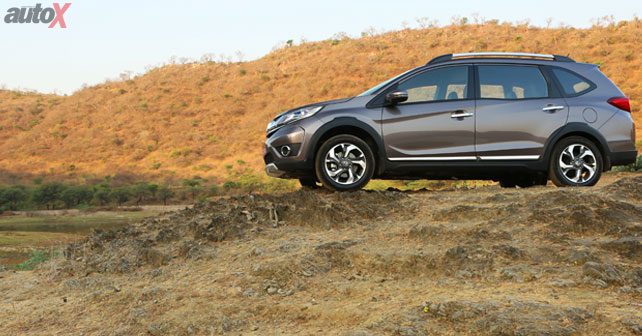
Well, the BR-V certainly brings more to the table than the traditional sedans and SUVs in its price bracket, which ranges between Rs. 8.75 to 12.90 lakh (ex-showroom, Delhi). The fact that it’s a seven-seater definitely works in its favour in a market where extended families are aplenty. But the fact that it comes with very little in terms of equipment cannot be ignored.
For now, its strengths lie in its flexibility to carry more people or luggage – based on your needs. It also offers plenty of ground clearance to deal with some light off-tarmac driving if and when required. Combine that with Honda’s legendary reliability, and the Japanese automaker now has a legitimate contender in the popular mid-size lifestyle vehicle segment – quite a mouthful that segment!
Also read- Toyota Innova Crysta Review
Engine: 1,498cc / In-line 4-cylinders / 16 valves / Turbocharged
Fuel: Diesel
Transmission: 6-Speed Manual / Front Wheel Drive
Power: 100bhp @ 3,600rpm
Torque: 200Nm @ 1,750rpm
Front suspension: McPherson Strut with Coil Springs
Rear suspension: Torsion Beam with Coil Springs
Front brakes: Discs
Rear Brakes: Drums

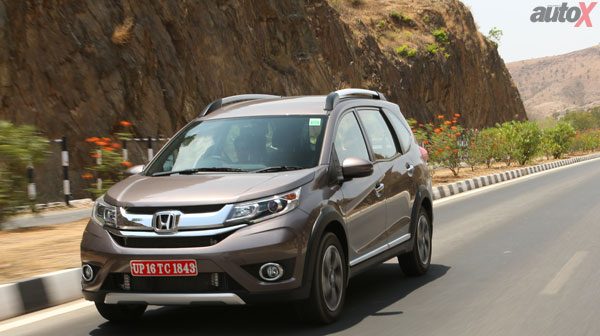
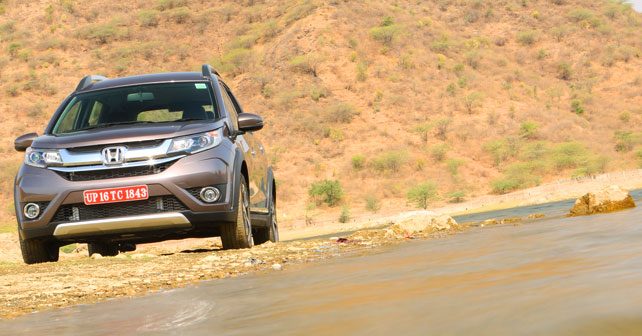

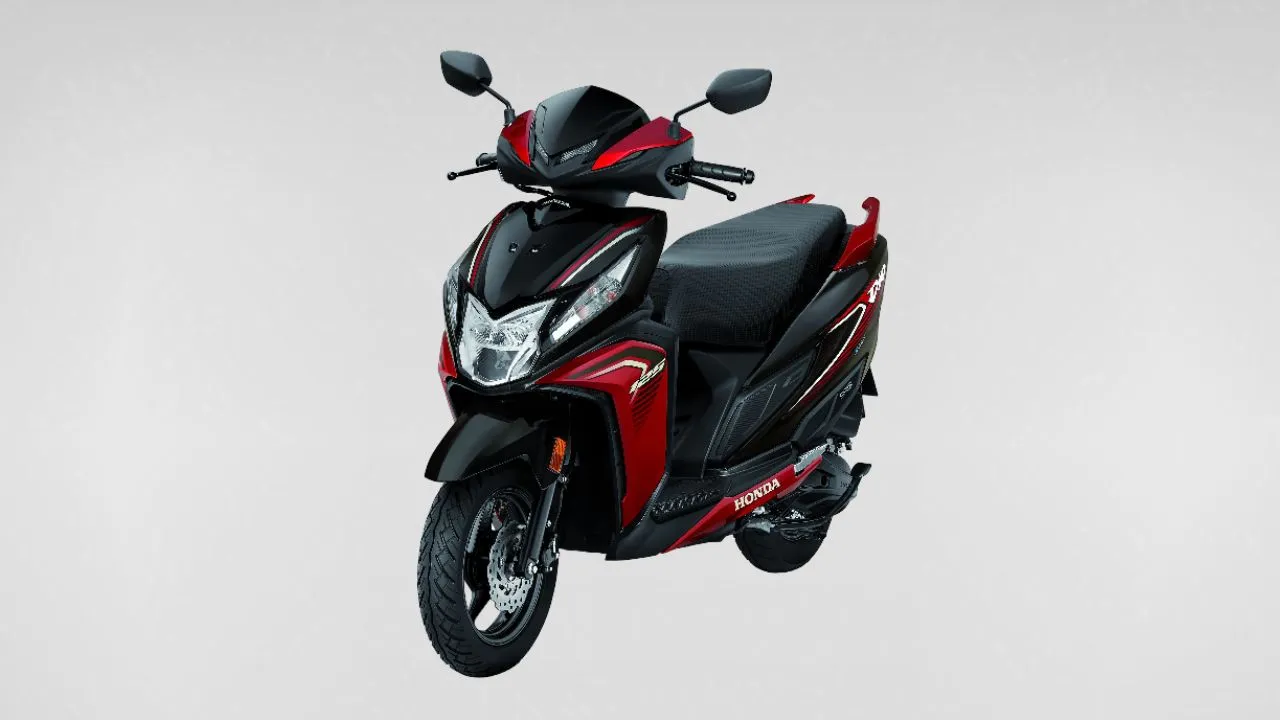

.webp)



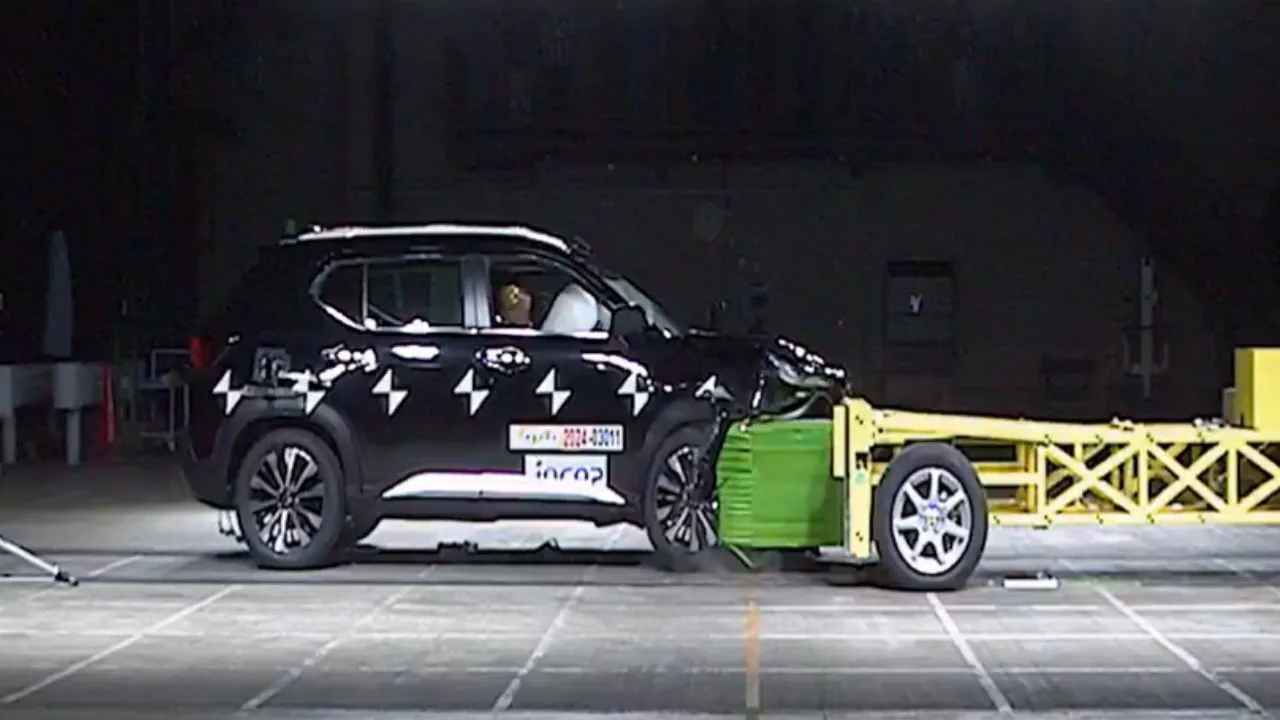
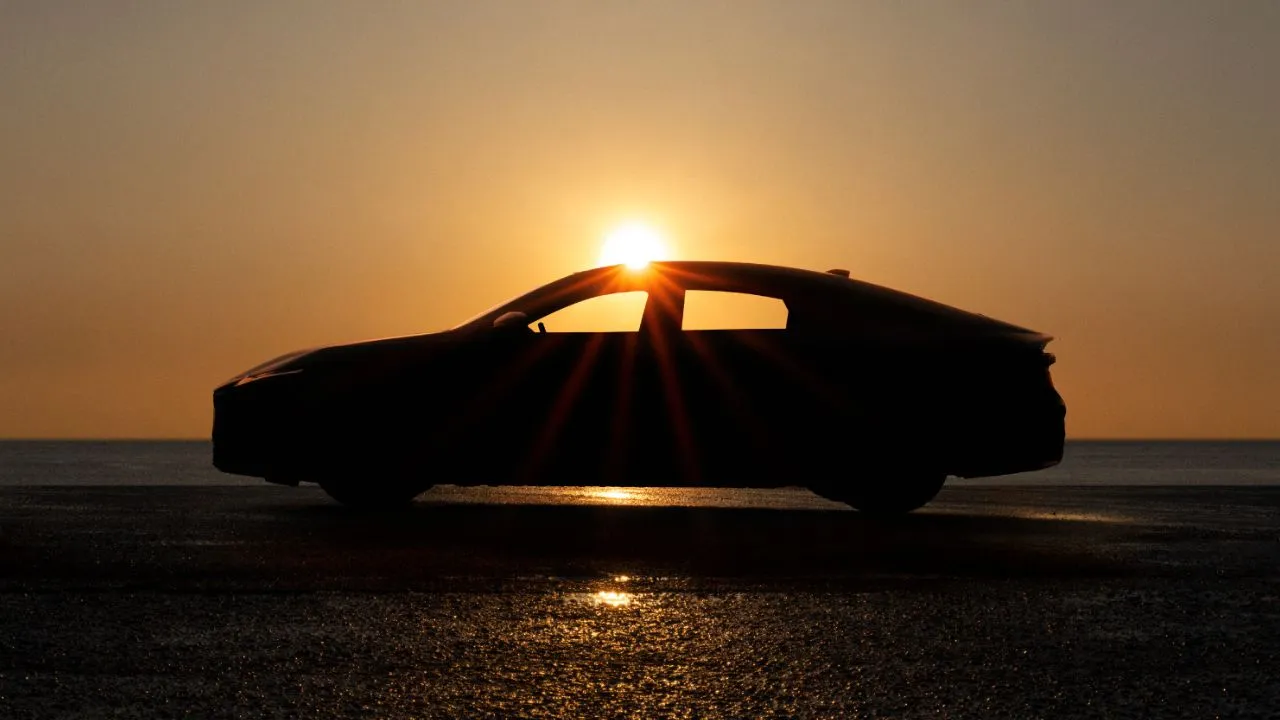

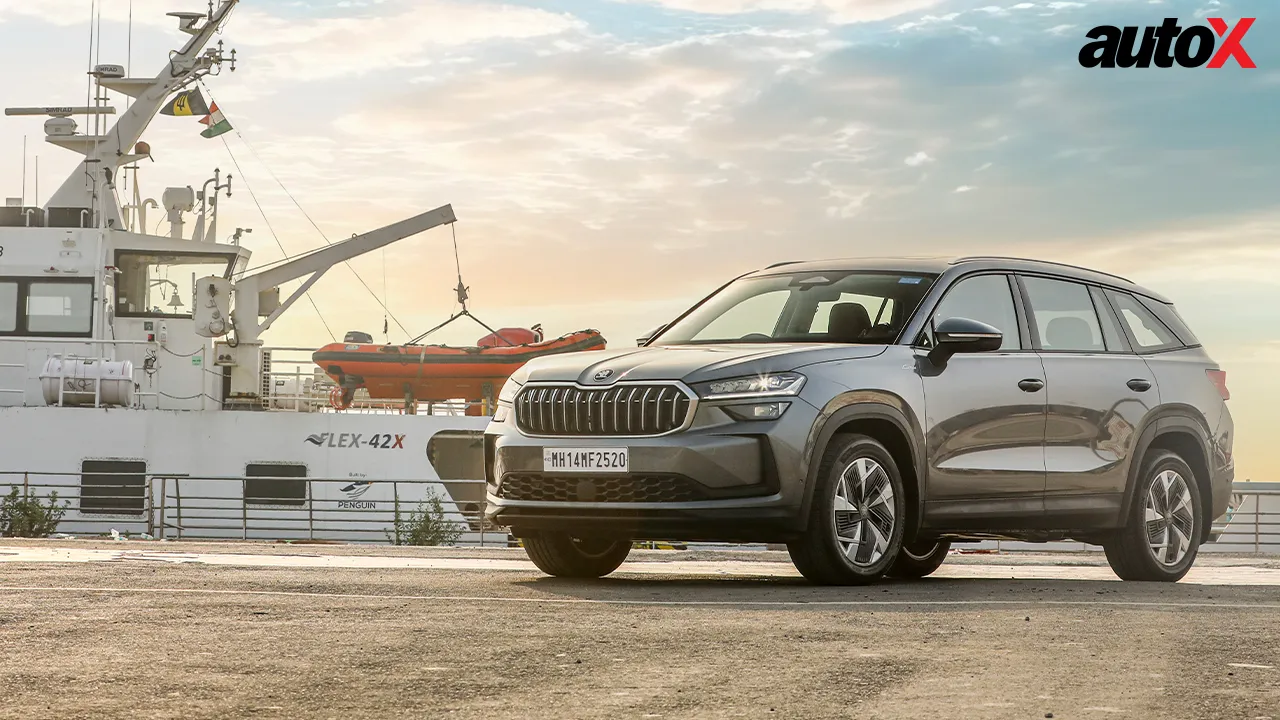




















Write your Comment on